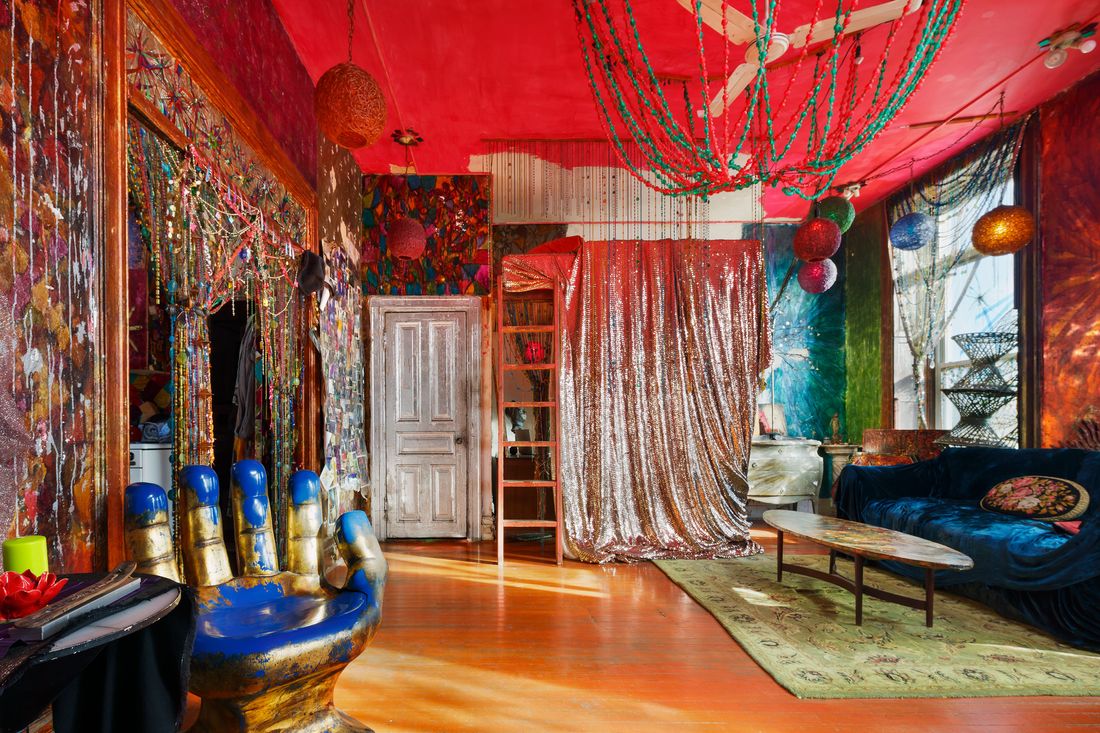
Gerald Decock has lived in a south-facing studio on the top floor of the Chelsea Hotel since 1994; the anniversary of his lease signing was last month. The hotel was a different place back then, presided over by the mercurial manager Stanley Bard, who, since the early 1970s, had rented its apartments to artists, musicians, writers, and the bohemian children of the well off; many of them were heavy drug users. When DeCock got his place, there was just one problem: Bard hadn’t let the current resident, Anthony Kiedis of the Red Hot Chili Peppers, know that he had to move out. But such were the good old crazy days at the Chelsea Hotel, which, long before DeCock arrived, had been home to Patti Smith, Janis Joplin, Jimi Hendrix, Dylan Thomas, Mark Twain, and Quentin Crisp. Lola Schnabel was a neighbor until a few years ago. “The reason I was obsessed with the apartment was because it had this beautiful outdoor space,” DeCock says, “and I was always out there. It’s where I would paint.” He used to get to it via sliding glass doors high up on his kitchen wall, accessed by a ladder. The doors have since been boarded up, victims of the hotel’s ongoing renovation, but the ladder is still there.
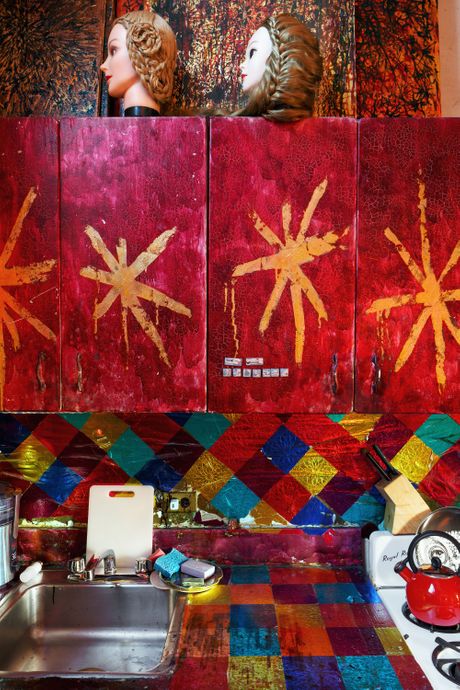
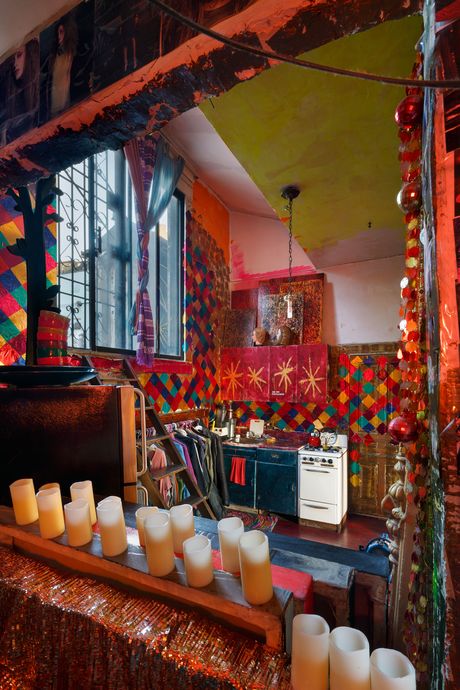
Bard was forced out in 2007, and the building was sold to developers in 2011. It was then sold twice more. Many of the old-timers left, and the DIY garden on the roof that DeCock and others had planted and tended was brutally destroyed. But DeCock, an artist and a hairdresser — wearing, when I met him, blue jeans, suspenders, and Renaissance boots custom-made by a shoemaker in the Catskills — is among those who remain. His psychedelic interior is still adorned with Mardi Gras beads, the walls painted and repainted in silver and jewel tones, the windows shedding stained-glass light as they too have been painted over. He built a loft bed when he moved in and kept the two pieces of furniture that had been left there, a bureau and console, adding some glittery curtains to hide his office space beneath the bed. You access the apartment from the floor below: His door opens right onto a staircase. Boom, start climbing up to his living room, and be careful not to trip, because your eye is drawn to the hundreds of photographs plastered along the wall.
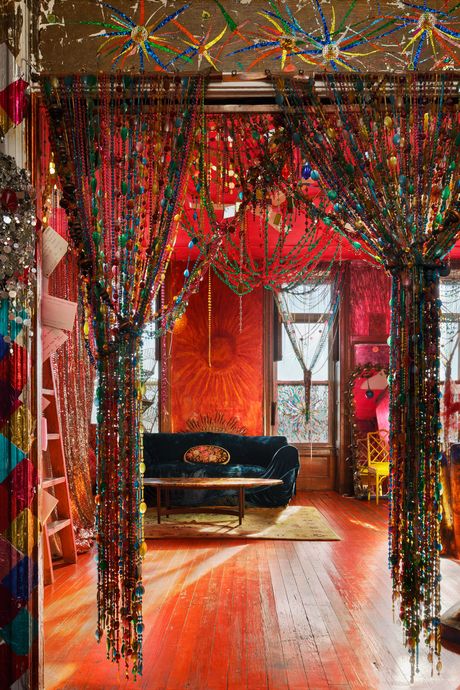
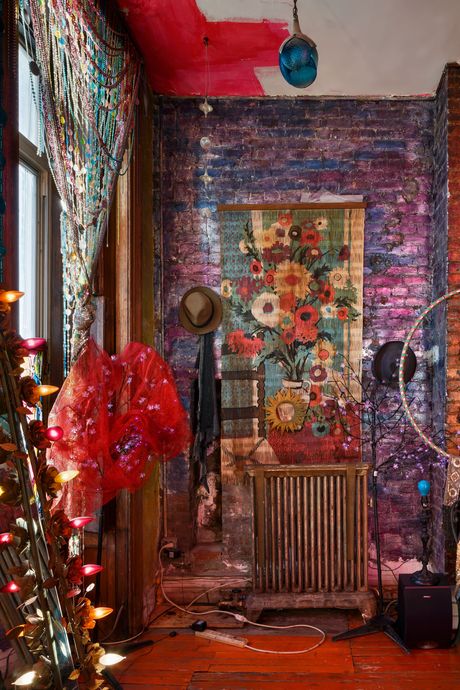
“I originally set out doing this as a kind of eulogy and trying to preserve something before it was totally gone,” Colin Miller says of the photos he took for Hotel Chelsea: Living in the Last Bohemian Haven, from which the pictures shown here were taken. (The hotel is being remade and reopened by a team including the accomplished faux-hemian hotelier Sean MacPherson.) “I was amazed at the resilience of people and that people were still leading amazing lives there.”
“I remember the days of yore, when there was a great freak-community camaraderie,” says DeCock. “I actually look at it like a lesson in being Zen,” he adds of the stress of the renovation. “It’s actually been really good for me in that way. I mean, we’re all dealing with construction; we live in New York City, right? It’s everywhere.”
*A version of this article appears in the November 11, 2019, issue of New York Magazine. Subscribe Now!
More From Design Hunting
- A Ranch House Turned Modern Oasis
- Home Is Where This Designer’s Art Is
- Transforming a 1980s Time Capsule






